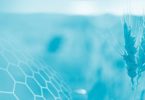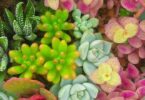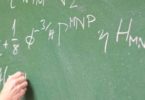Nervous Tissue MCQ:
The junction between the axon of one neuron and the dendrite of the next is called
(a) A joint
(b) A synapse
(c) Constant bridge
(d) Junction point
The most appropriate definition of Neuroglial cells are that they are
(a) Nonsensory supporting cells
(b) Secretory cells
(c) Sensory cells
(d) Sensory and supporting cells
Related: Questions on Biomolecules
The brain develops from
(a) Ectoderm
(b) Mesoderm
(c) Endoderm
(d) Meso-endoderm
A nerve impulse will travel through a nerve fibre only if the membrane suddenly becomes more permeable to
(a) Chloride ions
(b) Potassium ions
(c) Sodium ions
(d) Calcium ions
Nerve fibres conduct impulses in
(a) One direction
(b) Two direction
(c) Multi direction
(d) None of the above
Related: General science Quiz in English
Cell bodies or cyton is found in
(a) Brain
(b) Spinal cord
(c) Brain and ganglia
(d) Brain, spinal cord and ganglia
The function of nervous tissue is
(a) Irritability
(b) Sensibility
(c) Responsiveness
(d) Contraction
Which of the following structures, are the speciality of nerve cells
(a) Nucleus and cytoplasm
(b) Axon and dendrites
(c) Vacuoles and fibres
(d) Synapse and ganglia
Related: Solid state questions
The afferent process of neuron is known as
(a) Axon
(b) Dendrite
(c) Cyton
(d) Neurofibrillae
Nissl’s granules are characteristically found in
(a) Nephrons
(b) Neurons
(c) Cytons
(d) Dendrites
Neuroglia cells differ from neurons in having
(a) No Nissl’s granules
(b) No radiating processes
(c) No cyton
(d) No nucleus
The function of repairing in nervous tissue is done by
(a) Glial cells
(b) Nerve cells
(c) Cytons
(d) Only axons
Related: important questions from Human Health and Diseases
Nerve fibre is different from the muscle fibre due to the presence of
(a) Myofibrils
(b) Lines
(c) Sarcolemma
(d) Dendrites
Largest number of cell bodies of neuron in our body are found in
(a) Retina
(b) Spinal cord
(c) Brain
(d) Tongue
Schwann cells and Node of Ranvier are found in
(a) Nervous tissue
(b) Osteoblast
(c) Chondrioblast
(d) Gland cells
Most of the neurons of our body are
(a) Unipolar
(b) Bipolar
(c) Pseudounipolar
(d) Multipolar
Non-excitable cells, found among the neurons are called
(a) Dendrite
(b) Axon
(c) Schwann’s cells
(d) Nissl’s body
Related: plant kingdom questions and answers
Myelin sheath is covering of
(a) Muscle cells
(b) Axon of neurons
(c) Blood vessels
(d) Oesteocytes
Node of Ranvier is found in
(a) Right auricle
(b) Muscle bundles
(c) Dendrite
(d) Axon
Velocity of impulse is greater in
(a) Thin nerve
(b) Thick nerve
(c) Does not depend on thickness
(d) Afferent nerve
Longest cell in human body may be
(a) Nerve cell
(b) Leg muscle cell
(c) Bone cell
(d) Heart muscle cell
Axons form nerve in
(a) Autonomic nervous system
(b) Central nervous system
(c) Peripheral nervous system
(d) All of the above
Related: Atomic structure JEE questions
Nerve cell originated from embryonic
(a) Ectoderm
(b) Mesoderm
(c) Both of these
(d) Endoderm
To start conduction of impulse, the value of action potential must not be
(a) Less than threshold value
(b) More than threshold value
(c) Equal to threshold value
(d) All of the above






